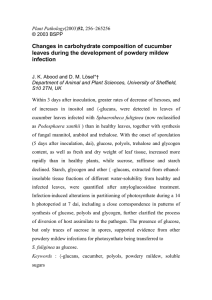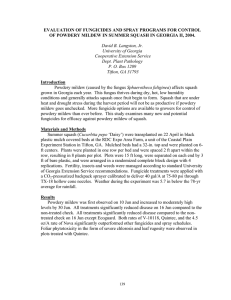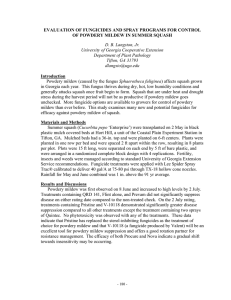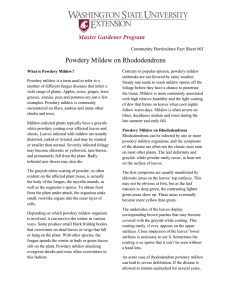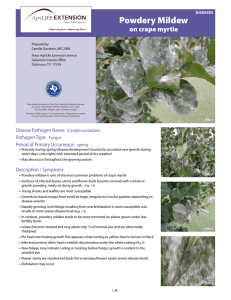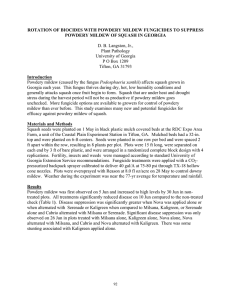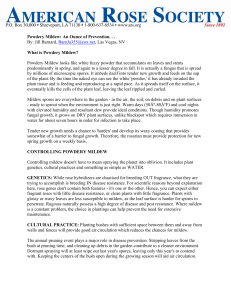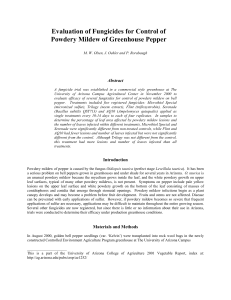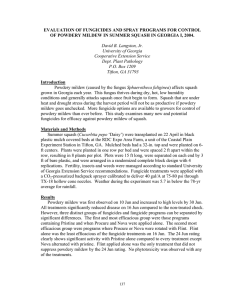JH NR 03-25-09
advertisement
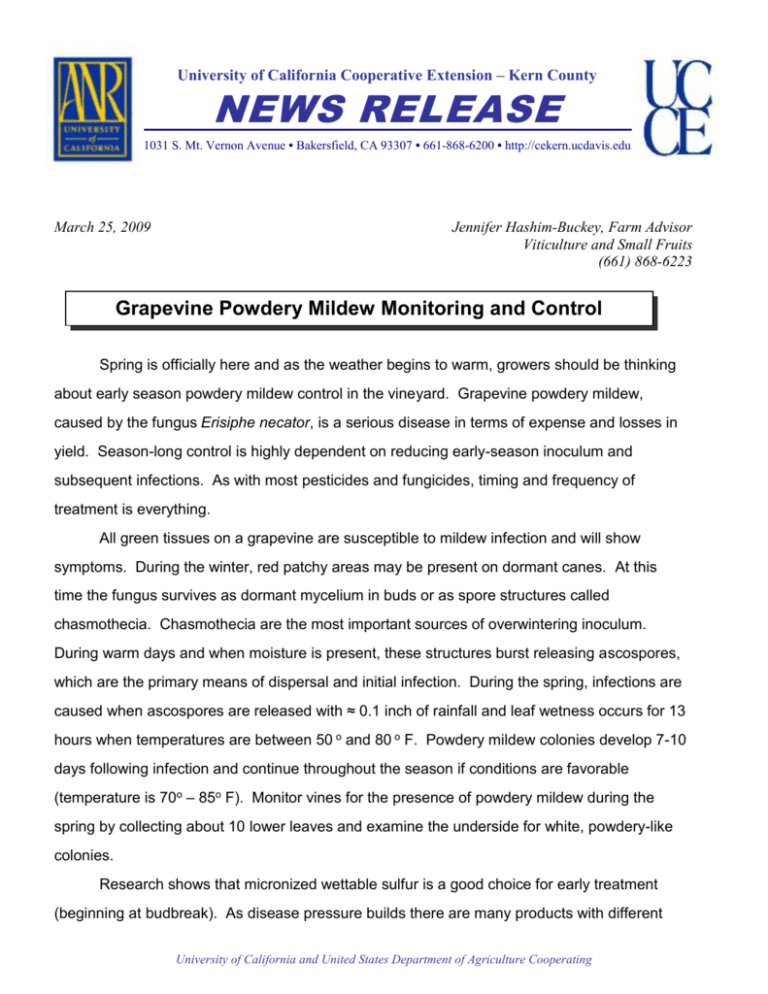
University of California Cooperative Extension – Kern County NEWS RELEASE 1031 S. Mt. Vernon Avenue • Bakersfield, CA 93307 • 661-868-6200 • http://cekern.ucdavis.edu March 25, 2009 Jennifer Hashim-Buckey, Farm Advisor Viticulture and Small Fruits (661) 868-6223 Grapevine Powdery Mildew Monitoring and Control Spring is officially here and as the weather begins to warm, growers should be thinking about early season powdery mildew control in the vineyard. Grapevine powdery mildew, caused by the fungus Erisiphe necator, is a serious disease in terms of expense and losses in yield. Season-long control is highly dependent on reducing early-season inoculum and subsequent infections. As with most pesticides and fungicides, timing and frequency of treatment is everything. All green tissues on a grapevine are susceptible to mildew infection and will show symptoms. During the winter, red patchy areas may be present on dormant canes. At this time the fungus survives as dormant mycelium in buds or as spore structures called chasmothecia. Chasmothecia are the most important sources of overwintering inoculum. During warm days and when moisture is present, these structures burst releasing ascospores, which are the primary means of dispersal and initial infection. During the spring, infections are caused when ascospores are released with ≈ 0.1 inch of rainfall and leaf wetness occurs for 13 hours when temperatures are between 50 o and 80 o F. Powdery mildew colonies develop 7-10 days following infection and continue throughout the season if conditions are favorable (temperature is 70o – 85o F). Monitor vines for the presence of powdery mildew during the spring by collecting about 10 lower leaves and examine the underside for white, powdery-like colonies. Research shows that micronized wettable sulfur is a good choice for early treatment (beginning at budbreak). As disease pressure builds there are many products with different University of California and United States Department of Agriculture Cooperating modes of action available for powdery mildew control. For example, the strobilurines (Abound, Flint, Sovran, Pristine) act as respiration inhibitors and the sterol inhibitors (Elite, Procure, Rally, Rubigan) prevent the production of ergosterol, a compound essential for cell wall synthesis. Other products such as cell signaling inhibitors (Quintec), systemic acquired resistance products (Messenger, AuxiGro), contact materials (oils, potassium bicarbonate, insecticidal soaps) and biologicals (Sonata, Serenade) also have activity against powdery mildew. It is extremely important to treat promptly and adhere to the suggested interval for repeat treatments. Furthermore, fungicides with different modes of action should be alternated for the purpose of resistance management. It is possible to lengthen treatment intervals, minimize fungicide use and save money if close attention is paid to weather conditions that favor or inhibit pathogen reproduction. The powdery mildew index (PMI) was developed to determine disease pressure and how often treatments should be made to protect vines. For more information on the PMI, management and treatment of powdery mildew, please visit http://www.ipm.ucdavis.edu/PMG/selectnewpest.grapes.html. The latest information on the Efficacy and Timing of Fungicides, Bactericides and Biologicals for Deciduous Tree Fruit, Nut, Strawberry, and Vine Crops can be found online at http://www.ipm.ucdavis.edu/PDF/PMG/fungicideefficacytiming.pdf. University of California and United States Department of Agriculture Cooperating

